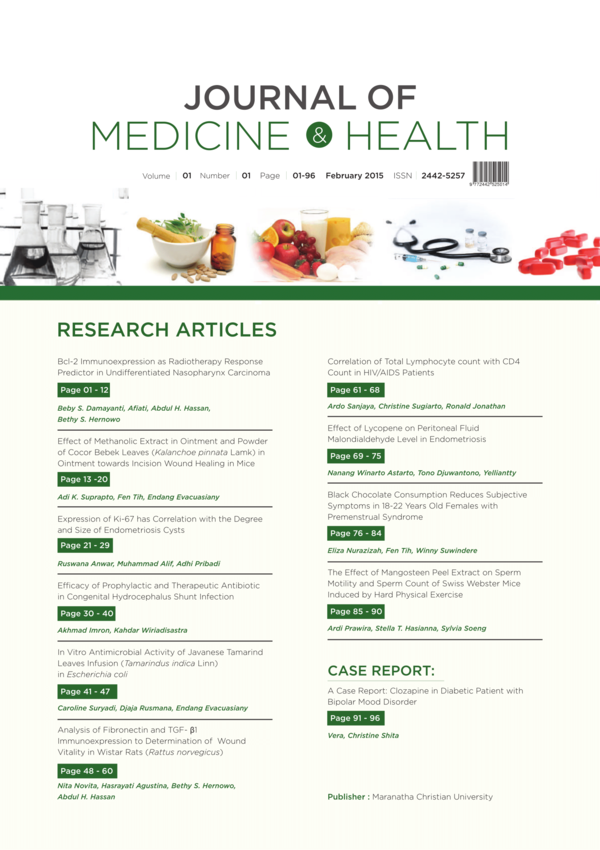Analysis of Fibronectin and TGF-β1 Immunoexpression to Determination of Wound Vitality in Wistar Rats (Rattus norvegicus)
DOI:
https://doi.org/10.28932/jmh.v1i1.499Abstract
Wound examination is indispensable in forensic practice. The scientific field of wound age determination has advanced progressively during recent years.The purpose of this study was to determine the differences of fibronectin and TGF-β1 expression in both antemortem and postmortem wounds. This study was an experimental with completely randomized design. The skin wounds (vital and postmortem) were taken from fourty Wistar rats and divided into 10 groups of rats. Immunohistochemical staining was performed to determine the differences between antemortem and postmortem wounds. The result showed that in 30 minutes after antemortem wound infliction, all of samples showed weak reactivity for fibronectin and TGF-β1 (100%). In first hour after wound infliction, 3 samples (75%) showed weakly positive and 1 sample (25%) strongly positive for fibronectin and TGF-β1. In 2 hour after wound infliction, 1 sample (25%) showed weakly positive and 3 sample (75%) strongly positive for fibronectin and TGF-β1. In 3 and 4 hour after wound infliction, all of samples strongly positive for fibronectin and TGF-β1. In postmortem wound, all of samples showed negativity for fibronectin and TGF-β1. In conclusion, fibronectin and TGF-β1 may be useful in the determination of wound vitality. Keywords: wound, fibronectin, TGF-β1, vitalityDownloads
Download data is not yet available.
Downloads
Published
2015-02-27
How to Cite
1.
Novita N, Agustina H, Hernowo BS, Hassan AH. Analysis of Fibronectin and TGF-β1 Immunoexpression to Determination of Wound Vitality in Wistar Rats (Rattus norvegicus). J. Med. Health [Internet]. 2015Feb.27 [cited 2025Dec.25];1(1). Available from: http://114.7.153.31/index.php/jmh/article/view/499
Issue
Section
Articles
License
Authors who publish with this journal agree to the following terms:
- Authors retain the copyright and grant the journal right of first publication with the work
simultaneously licensed under a Creative Commons Attribution-NonCommercial 4.0 International License that allows others to share the work with an acknowledgement of the work's authorship and initial publication in this journal. - Authors are able to enter into separate, additional contractual arrangements for the nonexclusive distribution of the journal's published version of the work (e.g., post it to an institutional repository or publish it in a book), with an acknowledgement of its initial publication in this journal.
 This work is licensed under a Creative Commons Attribution-NonCommercial 4.0 International License.
This work is licensed under a Creative Commons Attribution-NonCommercial 4.0 International License.

















